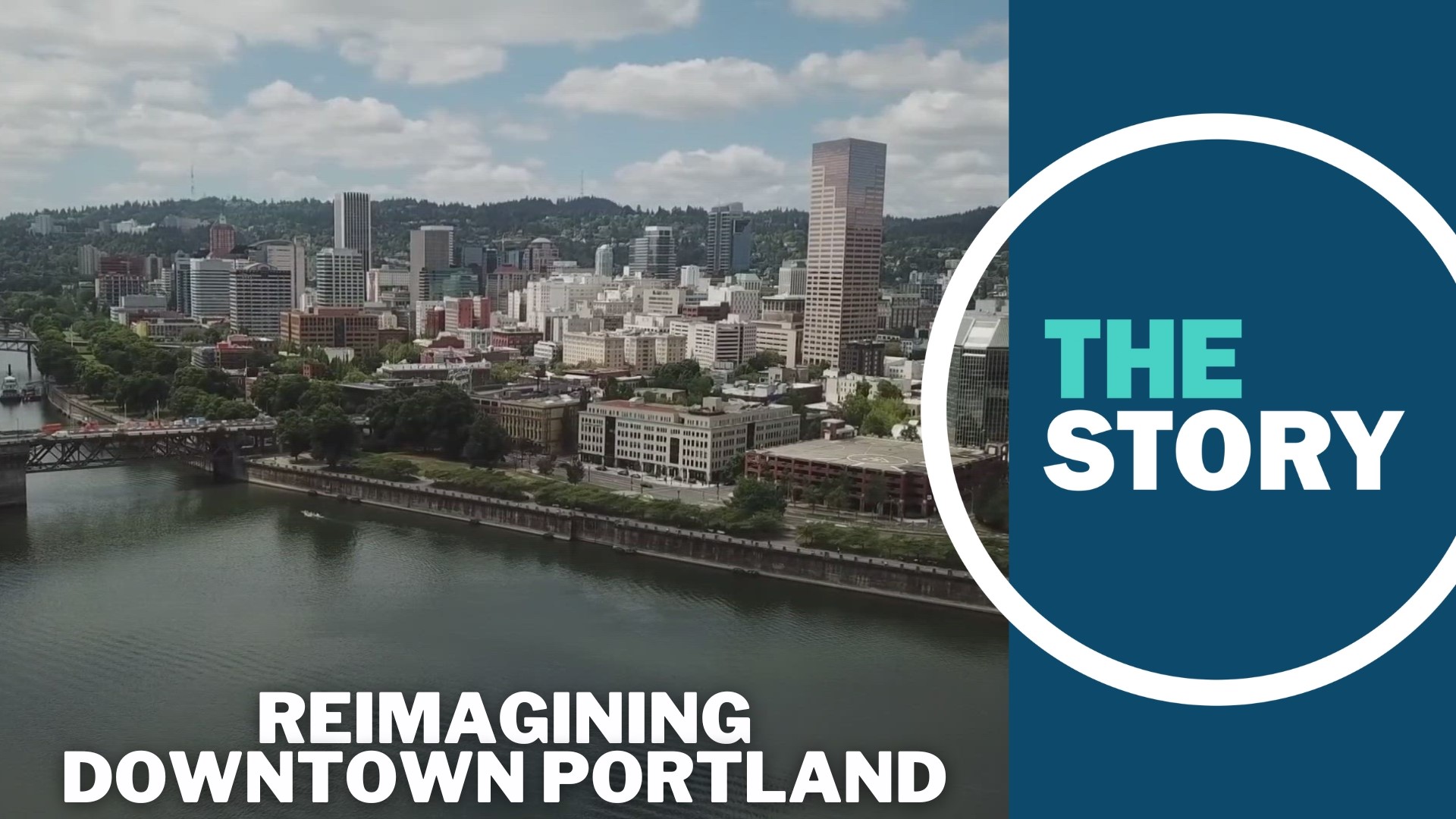PORTLAND, Ore. — The Portland region saw "modest improvements" in its economy last year, with positive but somewhat sluggish job growth and ongoing challenges with population loss and housing affordability, according to the Portland Metro Chamber's 2024 State of the Economy report.
Multnomah and Washington counties all lost population in 2022, according to the report, while Clark County saw what the report describes as a modest increase, and Clackamas County remained essentially unchanged. Most of the changes were driven by migration into or out of the counties; only Washington County had meaningful "natural" population growth, meaning growth driven by local births outpacing deaths.
"Once a migration magnet, the Portland area appears to have hit an affordability wall," the report concludes.
The region saw an overall job growth rate of 1.3% in 2023, which the report characterized as disappointing; the figure is lower than what Portland saw in 2022. It means that, unlike in 2022, the Portland region lagged behind the national average in terms of job growth. That's unusual, according to the report; Portland usually outpaces U.S. job growth during economic recovery periods.
Overall, job numbers have exceeded 2019 levels in all counties except Multnomah, according to the report, suggesting that "the region can declare the pandemic recovery completed" and should view future gains as new growth rather than an ongoing climb back out of the hole.
Local government, school, private education, health service, leisure and hospitality jobs all grew in 2023, while manufacturing and information jobs declined, according to the report. The information sector decline was especially pronounced at 10%, although the report noted that the decline mirrors national trends and the information industry presence in Portland is relatively small to begin with.
Portland continues to struggle with a high cost of living, the report found, particularly when it comes to housing. The high cost adds an effective 8% penalty to the region's median household income.
Compared with U.S. cities of a similar size and in similar economic circumstances, Portland is in about the middle of the pack, according to the report; the cost-of-living penalty to household income is larger in Seattle and Sacramento, but smaller in Denver, Minneapolis and Milwaukee.
The Portland region's overall tax burden has been a major topic of conversation in the past year. Looking at that same group of cities, the report concluded that Portland is also in the middle of the pack when it comes to revenue collection, but it noted that Portland's 26% "revenue collection growth" from 2010 to 2020 significantly outpaced all the other cities except Seattle.
More foot traffic needed for downtown Portland
A separate Metro Chamber report on the status of Portland's Central City offered a similarly mixed assessment, but emphasized the work of the Portland Central City Task Force that Gov. Tina Kotek convened last year as a potential driver of improvements.
Central city foot traffic grew 14% in 2023, according to the report, which puts it in the middle of the pack when compared to similar cities. But with the pandemic recovery mostly played out and the city still facing major downtown office vacancies, Portland isn't going to be able to place as much reliance on office workers to keep growing foot traffic.
Instead, the city will need to concentrate on increasing foot traffic from visitors and people who live in the central city, the report concluded.
"The good news is that residential foot traffic could see a substantial rise if planned developments are successfully implemented," the report concluded. "In the near term, Portland should anticipate a continued increase in office vacancies, driven largely by expiring leases and tenants opting for smaller spaces or to move away. It will be crucial to reimagine new uses and to attract a diversity of new tenants to create vitality in office spaces."
Foot traffic growth was stronger in some parts of the central city than others, but the report cast that as good news. The areas that saw the most growth were the areas that also took the hardest hits during the pandemic, such as the Lloyd District and Lower Albina.
Areas that saw more sluggish foot traffic growth, such as the Pearl District and South Waterfront, had a stronger mix of retail and residential uses to begin with and therefore didn't lose as much of their original foot traffic in 2020.
The office retail market struggles aren't going to go away anytime soon, the report added — in fact, the amount of vacant office space in the central city is likely to keep growing in the short term, and landlords will need to find alternative uses for some of their spaces.
"Making productive use of the space will be the work of the next decade or more," the report concluded.

